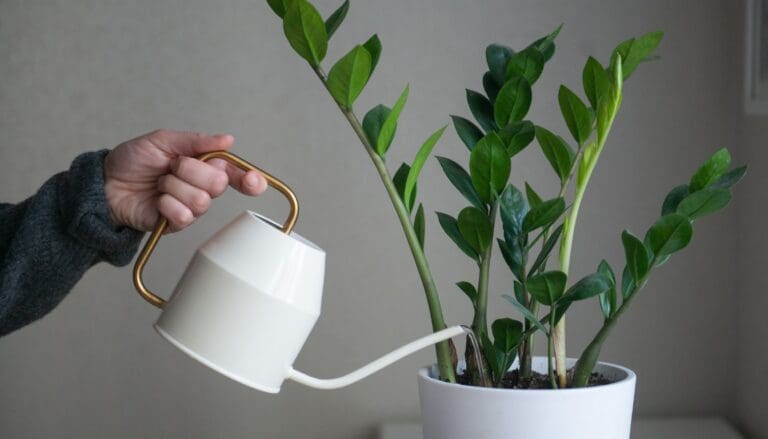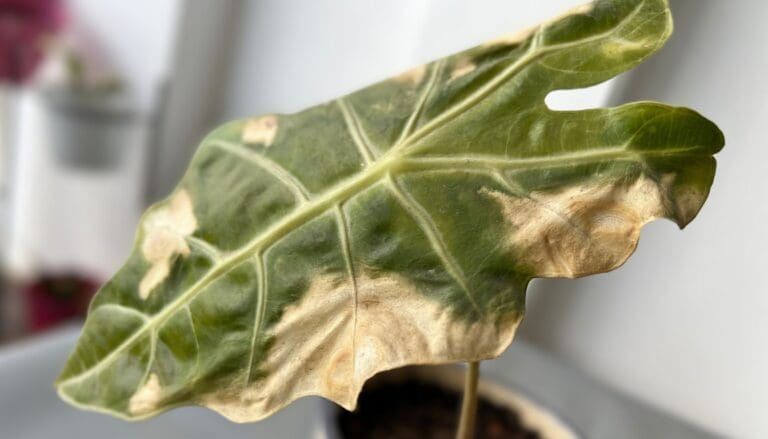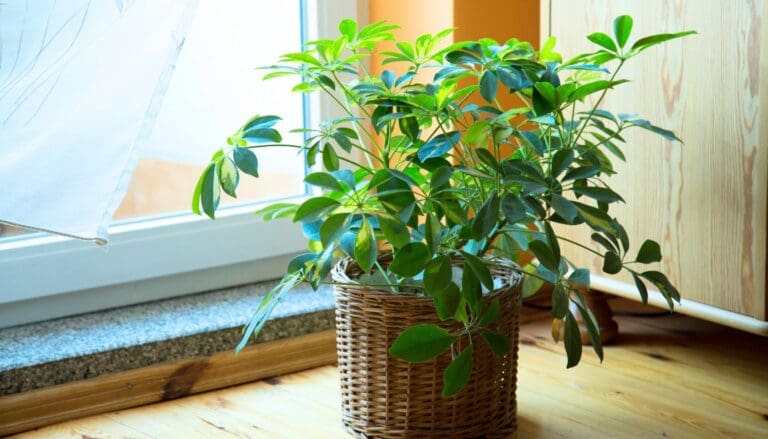How Fast Does Chinese Evergreen Grow? (+Aglaonema Growth Tips)
Chinese evergreen, also called aglaonema, is a tropical plant popular in the US for its exotic foliage. But one question that people want to know before getting one for their house is how fast does Chinese evergreen plants can grow.
In general, Chinese evergreen grows about 6-12 inches every year. They are slow-growing plants, and you will see significant growth in them during the growing seasons, the summer and spring months. But their growth slows down during the winters as it is the dormant period.
Other than the season, other factors, including light, humidity, watering, etc., can also affect the growth of the Chinese Evergreen plant.
If your Chinese Evergreen gets the ideal growing conditions, it will show proper growth, and if the plant doesn’t get the right living conditions, it will grow slow.
Let’s look at all the factors that can affect the growth of your Chinese Evergreen and how much growth you can expect in the plant.
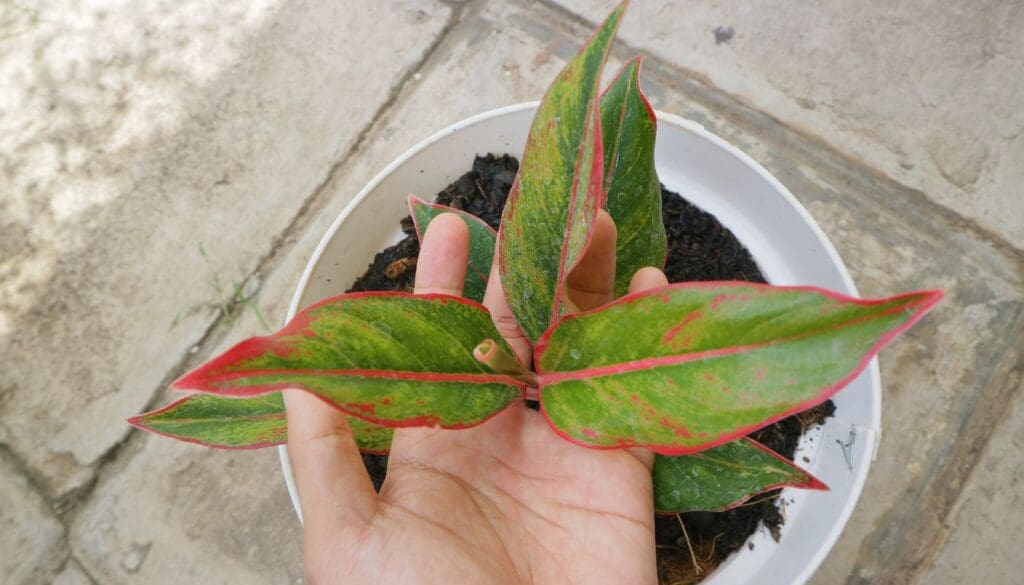
Please note: Simplify Plants is reader-supported. Some links in the post are affiliate links and I get a commission from purchases made through links in the post.
Are Chinese evergreens slow-growing?
Chinese evergreens are considered slow-growing plants. It can take a few years for these plants to reach maturity. This is what makes these plants ideal for indoors.
Many people seek compact plants that don’t grow aggressively when looking for houseplants. So if you are seeking one such plant, you can opt for a Chinese evergreen.
However, the growth rate can differ according to the varieties. Some variety can grow faster than another one.
On average, a Chinese evergreen can grow 3 feet tall and 3 feet wide.
Factors that affect the growth of Chinese Evergreen
Many people state that their Chinese Evergreen plants are not growing. You can combat this issue once you know the plant’s growth factors.
The factors affecting the growth of a Chinese evergreen are:
- Season
- Adaptability
- Light
- Temperature
- Humidity
- Watering
- Fertilization
- Potting soil
- Pot
- Pests
- Pruning
Keep reading to understand these better, as I will discuss each in detail.
Season

The first factor I would like to bring up is the season. Plants experience two periods: growing and dormant. The growing period is when the plant gets the ideal temperature, sunlight, humidity, etc.
For Chinese Evergreen plants, summer and spring seasons are the growing periods. This is when the plant receives warm conditions similar to its native land.
You will notice good growth in your Chinese evergreen during spring and summer.
However, the winter season is the dormant period for Chinese evergreens. It doesn’t get the ideal growing conditions during this time, and it conserves its energy and rests rather than focusing on growth.
So, you might not notice sufficient growth in your Chinese evergreen during winter, and this is nothing to worry about. It is a natural process.
You should take care of the plant during winter and let it rest.
Adaptability
When you bring a Chinese evergreen home, it gets exposed to a different environment with different conditions all of a sudden. Like human beings, plants also need time to adjust to a new environment.
When you bring the plant to a new environment, it gets stressed. So, you might not see any growth in the plant while it’s going through a stressful period.
Wait and give the plant enough care, and only then you’ll notice growth once the plant starts recovering.
Light

Light is a vital factor that determines the growth of a plant. Plants need light for their daily activities like photosynthesis. This is how plants generate food that helps them grow.
So, a plant exposed to a good amount of light will photosynthesize more and grow faster. But a plant that doesn’t get enough light will not photosynthesize as much and grow slowly.
Although Chinese Evergreen can survive in low-light conditions, you won’t see enough growth in it.
Find a bright spot in the house that gets indirect sunlight throughout the day and place your Chinese evergreen there. Don’t expose it to direct sunlight.
If there is insufficient natural light, you can get artificial light and keep your plant under it.
Also read: How Much Light Does A Chinese Evergreen Need? (Light Requirements)
Temperature
Coming from tropical areas, Chinese evergreen is used to a warm climate with high temperatures. The ideal temperature for these plants is 68-77°F.
If you can provide high temperatures similar to the native lands of Chinese evergreen, the plant will grow considerably. But if you stay in a colder area with low temperatures, the plant will grow more slowly.
This is one reason you don’t see the plant growing in winter, as the temperatures drop considerably during this season.
You must keep the plant away from cold drafts, frosts, and low temperatures during winter. Try to keep the temperatures high by keeping it in a room with a fireplace or a heater.
However, don’t keep your Chinese evergreen too close to any heating source as that can dehydrate the plant.
Humidity

High humidity is crucial for tropical plants, and it can promote the growth rate of these plants. The plant will undergo different problems without sufficient humidity, including slow growth.
Chinese evergreen requires 60-70% humidity for fast or moderate growth. It will not die with lower humidity levels, but you will not see enough growth.
You can maintain the correct humidity levels by using a humidifier, relocating the plant to the bathroom, or grouping your Chinese evergreen with other moisture-loving plants.
Don’t expose the plant to drafts or the dry air of the AC.
Also read: Should I Mist My Chinese Evergreen? (+Humidity Guide)
Watering
If you want your Chinese Evergreen to grow fast, you must maintain the correct watering pattern. Many people go wrong with this, especially if you are just starting.
Chinese evergreen plant requires evenly moist soil all the time, but it can’t stand in soggy soil. So, you must water it correctly to ensure that the soil remains moist but doesn’t become soggy.
On average, your Chinese evergreen will need watering once a week. To ensure that you are watering correctly, check the soil’s moisture before watering the plant.
If you are not good at remembering when to water the plant, you can maintain a calendar that will remind you to water the plant.
Your Chinese evergreen will slow down its growth or stop growing if you keep it thirsty or overwater it.
Also read: How Much Water Does A Chinese Evergreen Need? (How Often+Summer & Winter)
Fertilization

Fertilizers provide nutrients to the plant that soil alone can’t provide. Chinese Evergreen is a light feeder, and it won’t require much fertilization.
You won’t see enough growth in your Chinese evergreen without proper fertilization. But if you add too much fertilizer, it can also stop the plant’s growth by damaging the roots.
Avoid fertilizing in winter as the plant remains dormant and doesn’t require any fertilization during that time.
Also read: Does Chinese Evergreen Plant Needs Fertilizer? (How Often+Best Fertilizer)
Potting soil
Chinese evergreen is a tolerant plant that can survive in different types of potting soil. But since it prefers slightly moist soil yet is not soggy, you must find the right balance.
If you don’t use the correct potting soil, the soil will either get dry too fast or become waterlogged. Both these conditions are unfavorable for the plant, which will impact the plant’s growth.
Prepare a potting mix that will retain enough moisture to keep the soil moist and drain the excess water not to make it soggy.
You can use regular garden soil and add perlite, vermicompost, and cocopeat to create the ideal potting mix for your Chinese evergreen.
Also read: What Kind Of Soil Does A Chinese Evergreen Need? (+Best Soil Mix)
Pot
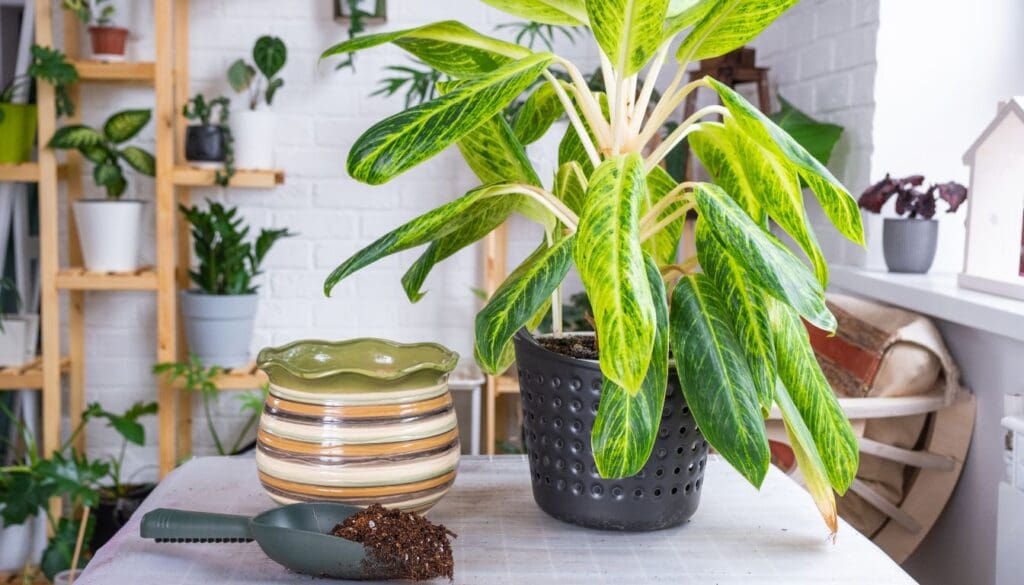
The pot size can determine the growth of your Chinese evergreen too. Many people don’t pay any attention to this factor but don’t miss this.
If the Chinese evergreen has outgrown its pot, the pot size is smaller than what the plant would like, and it will get rootbound. A rootbound plant either grows very slowly or stops growing.
If this is the reason behind the plant’s slow growth, you’ll notice roots showing up on the soil, coming out of the drainage holes, and forming circles inside the pot.
In this condition, you’ll need to repot the Chinese evergreen in a bigger pot that has sufficient space to allow the roots to grow freely.
But if you get a pot that is too big for the plant, it might get overwatered as the pot will hold more soil and water than the plant needs.
Pests
Pests are a headache for houseplant owners. These pesky bugs attack the beautiful houseplants and kill them within days if one can’t identify or remove them on time.
Some common pests that attack Chinese evergreen are mealybugs, aphids, scales, spider mites, etc. Most pests feed on the plant, grow a colony within days and make the plant weaker every day.
A plant that has been infested with pests will not grow well as it will lack the nutrients required for growth. Pests attack the young leaves and destroy the new growth of the plant.
If this is the issue, isolate your Chinese evergreen, or the other houseplants might also be affected.
You can spray neem oil on the plant every day till all the pests die or leave the plant. Mix neem oil with room-temperature water and spray it all over your Chinese evergreen.
You can also use pesticides available in the market to remove these pesky pests.
I recommend spraying your Chinese evergreen with a neem oil solution even if it doesn’t have a pest infestation. It will keep the pests away from the plant.
Pruning

Chinese Evergreen are low-maintenance plants and require little pruning. You mustn’t rush to prune the plant as you would prune your other houseplants.
However, you must not skip pruning altogether, especially when required. You must prune the dead and damaged leaves whenever you come across them.
If you don’t prune these, the plant will fail to shift its focus to new growth, and thus, you will fail to notice enough growth.
If your Chinese evergreen produces blooms, you will see slow foliage growth. If you want to see more foliage growth, you will need to prune the flowers that show up in spring.
Always prune with sharp and disinfected pruners or scissors and make clean cuts to avoid infections.
How can I make my Chinese evergreen grow faster?

Here are a few tips to help you grow your Chinese evergreen faster.
- Place the Chinese evergreen in a bright spot with enough indirect sunlight. Low light will not promote fast growth.
- Water the plant on time to ensure that the soil remains evenly moist without getting soggy.
- Try increasing the humidity with a humidifier or grouping humidity-loving plants together.
- Keep the Chinese evergreen in warm temperatures.
- Don’t expose it to low temperatures, cold drafts, or frost.
- Clean the leaves after a few days to make sure the plant can and photosynthesize well.
- Use well-draining potting soil that can also retain enough moisture.
- Prune the plant to get rid of dead and damaged parts and flowers during spring.
- Fertilize the plant with a well-balanced fertilizer once in 2-3 weeks during the growing season.
- Avoid fertilizing and reduce watering during the dormant period.
- If the plant becomes root-bound, shift it to a bigger pot.
- Spray a neem oil solution every month to keep the pests away.
- Don’t expect too much growth during the dormant period, and let the plant rest.
Reference: Wikipedia, Nasa clean air study, Missouri Botanical Garden, The University of Kansas, NC State University.
Recommended Garden Supplies
| Product Image | Our Recommended Gardening Supplies | Check Offers! |
|---|---|---|
Top Top
Top
Top
Top
Top
Top
Top
Top | rePotme Houseplant and Tropical Classic Potting Soil Mix | Check Offer On Amazon |
 Top
Top
Top
Top
Top
Top
Top
Top | Espoma Organic Indoor Plant Food | Check Offer On Amazon |
 Top
Top
Top
Top
Top
Top
Top
Top | GooingTop LED Grow Light 6000K Full Spectrum Clip Plant Growing Lamp | Check Offer On Amazon |
 Top
Top
Top
Top
Top
Top
Top
Top | Soil Moisture Meter | Check Offer On Amazon |
 Top
Top
Top
Top
Top
Top
Top
Top | Govee Hygrometer Thermometer, Bluetooth Enabled! | Check Offer On Amazon |
 Top
Top | LEVOIT Humidifiers for Large Room(Best For Plants) | Check Offer On Amazon |
 Top
Top
Top
Top
Top
Top
Top
Top | Upgraded DIY Automatic Drip Irrigation Kit, 15 Potted Houseplants Support | Check Offer On Amazon |
 Top
Top
Top
Top
Top
Top
Top
Top | Stainless Steel Heavy Duty Gardening Tool Set | Check Offer On Amazon |
 Top
Top
Top
Top
Top
Top
Top
Top | Bonide Insecticidal Soap | Check Offer On Amazon |
 Top
Top
Top
Top
Top
Top
Top
Top | Bonide 32 oz Spray Neem Oil for Organic Gardening | Check Offer On Amazon |
 Top
Top
Top
Top
Top
Top
Top
Top | Garden Safe Fungicide | Check Offer On Amazon |

